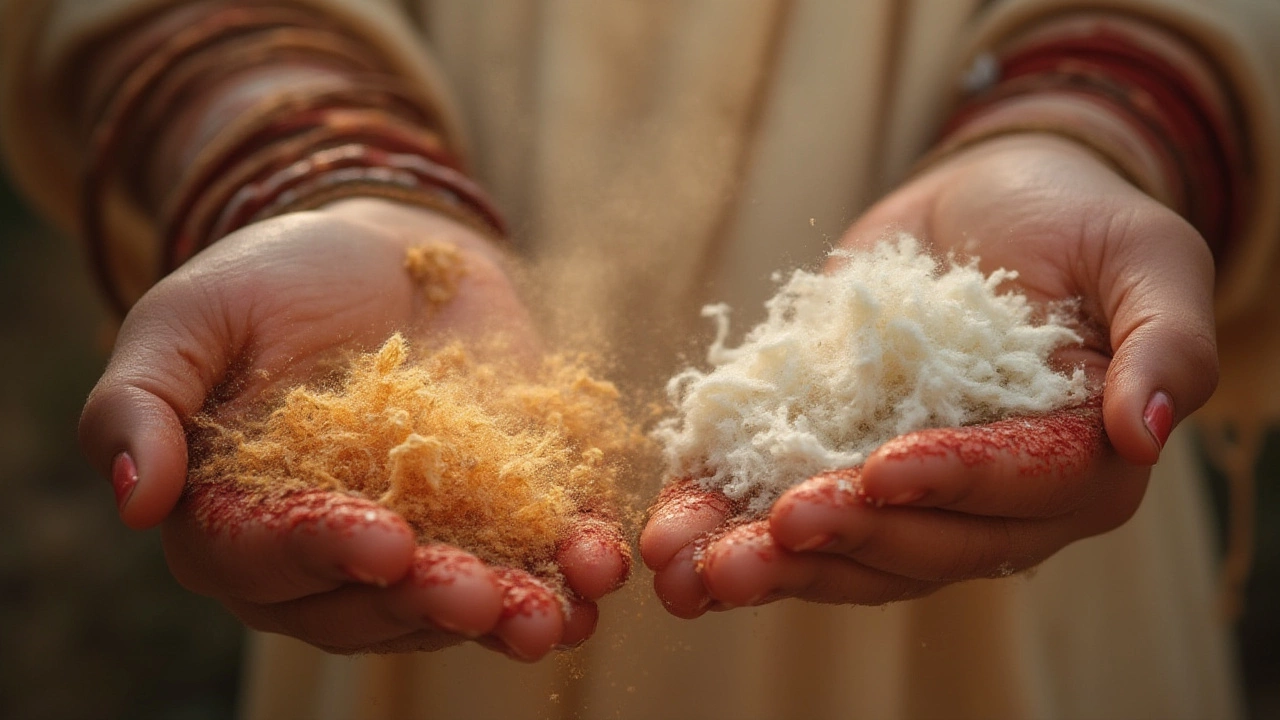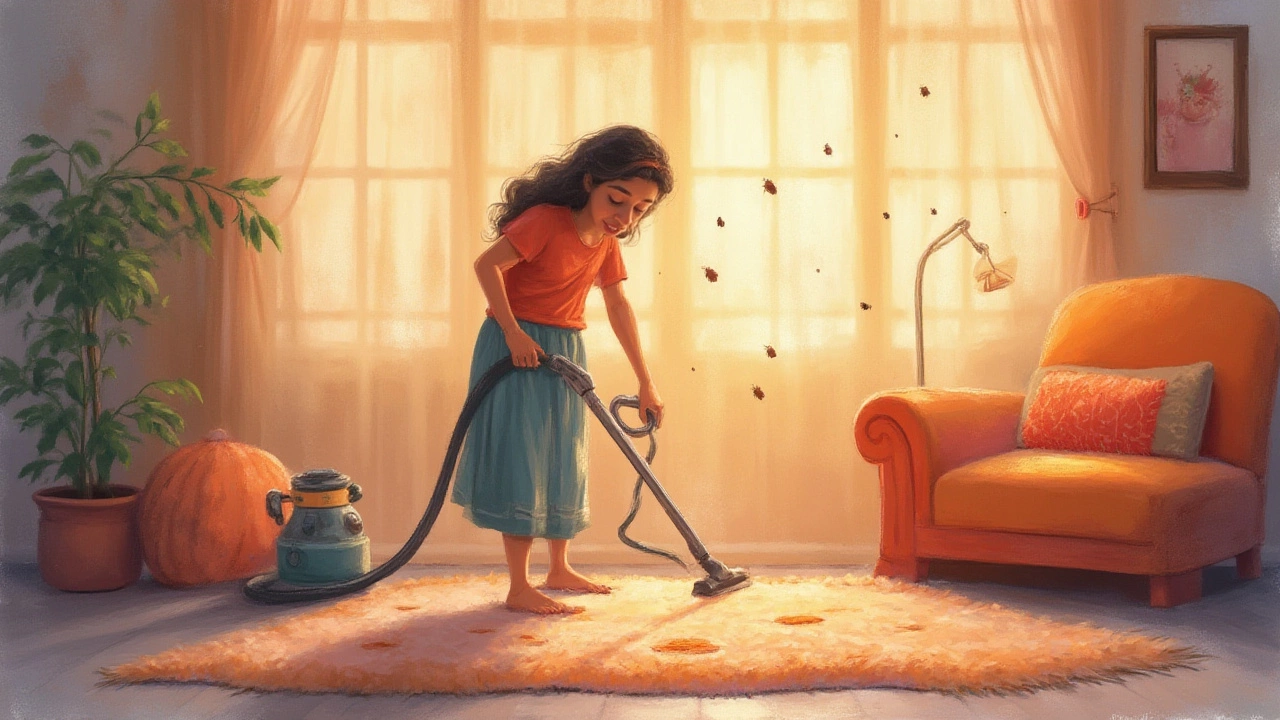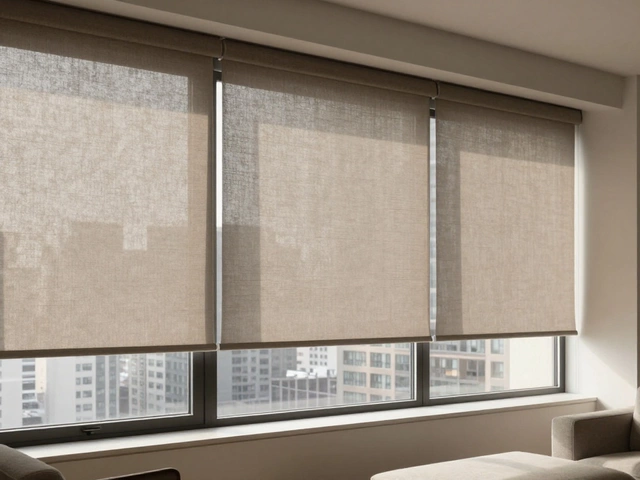
Did you know the wrong rug could literally ruin your living room vibe? Think about it—a rug isn’t just about looks. It’s where your feet land first in the morning and where you might curl up for some relaxed downtime with a book or your favorite show. But if you pick the wrong material, you could end up fighting stains, sniffly noses, or worse—a sad-looking rug that dies before the year’s done. Here’s what you really need to know about steering clear of the materials that just don’t belong in your living space.
Why Rug Material Matters: More Than Just Good Looks
You might fall for a rug just because it looks pretty, but what it’s made of will make a much bigger difference than you might think. Some rug fibers are magnets for dust, others shed like your neighbor’s cat, and then there are those silent offenders that quietly release chemicals into your air. If allergies have been acting up or your living room smells musty no matter what, the culprit might be underfoot.
Every material has its perks and problems. Wool feels amazing—soft, warm, and classic, but not everyone’s budget (or allergies) agree. Polypropylene looks tough on paper and wallet, but traps stains and smells. Cotton seems harmless until you realize it acts like a mop for dust and pet hair.
A Consumer Reports study in 2023 found that rugs were among the top five sources of indoor pollutants, especially in homes with high foot traffic or pets. Anyone in your family got asthma? What goes into your rug is as important as what’s in your food. Some synthetics, especially older or cheap ones, have chemicals like VOCs (volatile organic compounds). Even the U.S. Environmental Protection Agency warns that VOCs can seep out of new rugs and pollute indoor air for months.
The wrong rug is also a time-drain. You’ll spend hours vacuuming, steam-cleaning, or spot-treating stubborn stains—time you’d rather spend on hobbies or with the people you love. Some materials even break down faster, so you’re replacing instead of enjoying.
Top Rug Materials to Avoid in Your Living Room
The first group on the naughty list is synthetics made from petroleum-based products. That’s things like polypropylene (sometimes called olefin), polyester, and acrylic. You’ll spot these all over big-box stores because they’re cheap and come in every color under the sun. The catch? They tend to be stain magnets, can look matted fast (think of your favorite cheap sweater after a few washes), and release VOCs that can linger. Polypropylene, in particular, is known to catch oil-based stains that never really come out, and it has a knack for grabbing dust and pet dander.
Then there’s viscose (aka art silk or rayon). It sounds fancy—"silk" is right there in one of the names. The reality: viscose is plant pulp blasted with chemicals. It’s fragile, water ruins it, and even gentle cleaning can make it look worn. If you spill red wine, just say goodbye and start shopping for a replacement.
High-pile shag rugs might whisper nostalgia, but if they’re made from acrylic or other low-end synthetics, they become a dust bunny’s paradise. Many kids' rugs use these cheap synthetics, so watch those play areas.
Don’t forget rubber-backed rugs. They may stop slips and slides, but those rubber adhesives can break down, leaving sticky residue and a musty smell—and, yes, they can release even more chemicals.
Here’s how some of the most common rug fibers stack up:
| Material | Pros | Cons |
|---|---|---|
| Polypropylene | Cheap, stain-resistant (sort of) | Catches oily stains, sheds, off-gasses VOCs |
| Polyester | Bright colors, soft | Mats easily, traps dirt, hard to clean |
| Viscose/Rayon | Looks like silk | Not durable, water ruins it, tough to clean |
| Acrylic | Soft, looks like wool | Flammable, prone to mold, sheds |
Need a cheat sheet? If you’d hesitate to wear the material against your skin, maybe it doesn’t belong in your living room either. Your nose, your lungs, and your vacuum will thank you.

Health Risks and Environmental Hazards Lurking in Bad Rug Materials
The idea that "it’s just a rug" sounds harmless, but rugs made from certain materials can be silent troublemakers. Ever get a headache after buying a new rug, or notice that odd plastic smell? That’s probably VOCs—the same stuff in fresh paint or cheap furniture. These compounds mess with indoor air quality, especially in tighter homes with less ventilation. Kids and pets, who spend more time rolling around on the floor, are even more at risk. The rug materials to avoid often show up in medical studies on household allergies. For people with chemical sensitivities, that “new rug smell” isn’t just annoying—it can spark headaches or sinus problems that linger for weeks.
Then there’s the allergy angle. Rugs with loose fibers like some acrylics and cheap polyesters break down faster, releasing dust and microscopic bits each time you walk across them. A 2022 study from an allergy research group in Toronto found that homes with low-cost, high-shedding synthetic rugs had 50% higher dust mite counts than those with natural-fiber options. Synthetic fibers also tend to trap pollen, dander, and hair, making them hard to keep truly clean—even with a HEPA vacuum.
Some adhesives used in rug backings—especially those with rubber or latex—can also lead to mold if your living room gets humid or if you live in a rainy climate. Mold loves to hide under non-breathable plastic or rubber, and that musty smell is a bad sign you’re already late to the cleanup party. Anyone with a compromised immune system or lung issues? Best to skip anything with synthetic rubber or strong chemical finishes.
The environment pays the price too. Polypropylene and polyester rugs start as fossil fuels. They shed microplastics into your dust—and eventually, into local landfills and waterways. There’s also the problem of how hard it is to recycle mixed-fiber rugs. Low-quality synthetics are almost always garbage-bound, with few exceptions.
Questioning how safe your living room really is? The difference between breathing easy and fighting off scratches in your throat might just be a rug switch away.
Red Flags to Spot When Shopping for Rugs
Sifting through rows of rolled-up rugs can get overwhelming. Brands toss around words like “eco-friendly” or “luxury,” which don’t always line up with what you actually get. So what should raise an eyebrow before you tap the buy button?
- No clear material label. If the tag just says “manmade fiber” or is missing details, back away. Good materials get advertised up front.
- Overly bold colors, especially in cheap rugs. Intense synthetic dyes can mean more chemicals and potential for color bleed.
- “Silk” that costs less than dinner for two. Real silk is pricey; anything dirt cheap claiming to stand in is almost always viscose or rayon, primed for fast wear and stains.
- Weird chemical smell when you open the plastic. Trust your nose—if it smells off in the store, imagine it magnified at home.
- Excess shedding or visible fuzz on new rugs. Quick shedding on the sales floor means headaches at home. You’re not buying a pet.
- No warranty or cleaning instructions. If care seems complicated, it’ll be worse in real life.
- Thick rubber or latex backings with no airflow. Not only does this trap moisture, but it makes cleaning tricky and can yellow wood or vinyl floors.
A quick scratch test in the store can tell you if a material is prone to pilling. Gently rub the corner—if fibers come loose, imagine what months of daily traffic will do. Not sure? Ask the store staff. If they dodge questions about material breakdown or cleaning, treat it as a sign.

Better Rug Material Choices and What Makes Them Worth the Investment
Ready for an upgrade? Not all good-looking, cozy rugs will destroy your budget—or your air quality. Wool is a classic, and for good reason: it’s soft underfoot, naturally stain-resistant, and lasts for years if you treat it right. Sure, upfront cost might sting, but divide that cost over a decade and it’s cheaper than replacing bargain rugs every season. Wool also barely sheds once it’s settled and doesn’t hold odor the way synthetic rugs do.
Cotton is another strong option, especially if you like to toss your rugs in the wash from time to time. Cotton flat-weaves like dhurrie rugs don’t trap as much dirt as high-pile synthetics do, and they’re easy to spot clean. For families, pet people, or allergy prone, cotton’s breathability is a major perk, though it does wear out faster than wool. Still, at least you’re not breathing in chemical fumes.
Natural fiber rugs made from jute, sisal, or seagrass bring earthy style and low chemical exposure. Just know jute is softer, while sisal is rougher but lasts longer. Unlike synthetics, these fibers don’t release as many allergens or irritants, and they break down in the environment naturally. These rugs thrive in households that don’t do heavy spills (they don’t love wet cleanups) but stand up well to regular traffic and vacuuming.
For those craving something special, bamboo silk is a step up from viscose—made from natural fibers, often processed with fewer harsh chemicals. Look for rugs labeled OEKO-TEX certified or made by companies with transparent supply chains. If you spot “hand-knotted” or “hand-loomed,” you’re usually getting a sturdier, safer rug than factory-bonded versions.
Bottom line: a bit more money upfront for a high-quality rug often pays off through cleaner air, less cleaning, and a look that stays sharp. So walk right past that wall of bargain rugs—you’ll be grateful down the line, and so will your nose.




